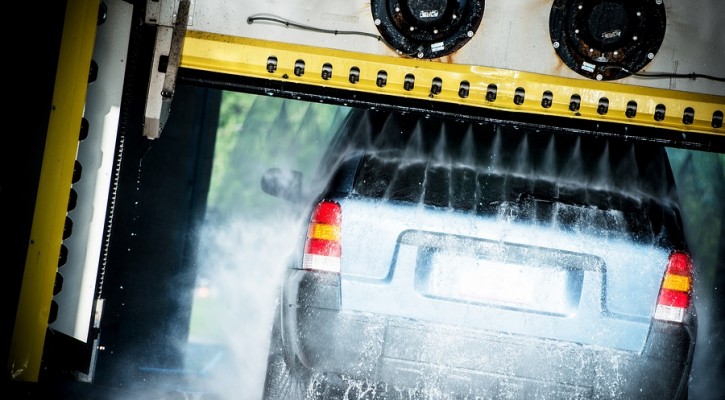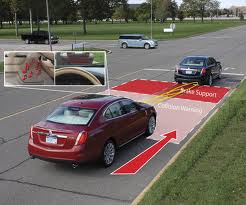Tag Archive: NHTSA

Airbag Recall Expands To Include 34 Million Vehicles In US
May 21, 2015
The Takata airbag recall was expanded this week to include 34 million vehicles in the US. The announcement was made by Department of Transportation Secretary Anthony Foxx on May 19th.
Previously, Takata had refused to admit that a defect was present in its airbags but allowed that vehicles in areas with high humidity might experience problems. The initial recall of vehicles with Takata airbags installed, was limited to vehicles in Florida, the Gulf states and Hawaii. Now Takata has admitted that there is a defect with the inflators and specifically with the propellant used to inflate the airbags.
The propellants in the inflators use a chemical that can degrade over time. If moisture is introduced into the chemical, it can lead to “over-aggressive combustion” leading to higher internal pressures that can rupture the body of the inflator. The defective airbags are responsible for six deaths and more than 100 injuries.
The airbag recall covers driver side airbags in at least 17 million vehicles and passenger side airbags in an additional 17 million vehicles.
With the admission that there is a defect in the airbag inflators, the airbag recall will now include more vehicle manufacturers than previously thought. Vehicles now subject to the recall are made by the following manufacturers:
- Honda
- BMW
- Chrysler
- Ford
- Mazda
According to the National Highway Transportation Safety Administration (NHTSA), it will take vehicle manufacturers about a week to determine which of their vehicles are affected by the airbag recall order. Takata will create a plan to find and replace the affected vehicles as soon as possible with priority going to vehicles located in states with high humidity.
For vehicle owners who want more information about the airbag recall, NHTSA has created a “recalls spotlight” page on their SaferCar.gov website. Follow the link to VIN lookup.
The VIN is your vehicle’s identification number. The VIN can be found either on an inspection plate on the driver side door jamb or under the windshield on the driver’s side of the vehicle. The VIN can also be found on your auto insurance policy and your insurance ID card.
Vehicle owners affected by the airbag recall should expect to receive a letter in the mail from the manufacturer of your vehicle. The recall notice from your manufacturer will give details about how to comply with the recall. Owners who receive an airbag recall notice shouldn’t ignore it and should attempt to get their vehicle repaired as quickly as possible.
Read more: Department of Transportation announces steps to address Takata air bag defects

Wash The Underbody Of Your Vehicle: NHTSA
April 16, 2015
Wash the underbody of your vehicle is the common sense advisory the National Highway Transportation Safety Administration (NHTSA) gave in closing out a recall investigation of corroded brake lines on older model GM vehicles.
The NHTSA investigation began in 2011 after receiving multiple reports of brake line failures in GM cars and trucks. After a four year investigation of vehicles manufactured between 1999 and 2003, NHTSA concluded that the corrosion of brake lines were mostly limited to those states that use salt or other corrosive chemicals for snow removal on the roads. Their investigation revealed that the brake line corrosion problem wasn’t unique to GM vehicles and occurred at about the same rate as those that occurred in vehicles built by other manufacturers. According to NHTSA, the brake line corrosion problem was due to salt and other corrosive snow removal chemicals that accumulated on the underbody of vehicles and didn’t indicate a manufacturing problem that would require a recall.
Instead of issuing a recall, NHTSA advised all drivers, especially those who live or drive in states where salt and other snow removal chemicals are regularly used, to thoroughly wash the underbody of their vehicles and keep the underbody clean during the spring and summer.
NHTSA also advised vehicle owners, especially those who drive vehicles manufactured in 2007 or earlier, to have the brake lines inspected on a regular basis and replace lines that show evidence of heavy corrosion. They also advised that owners have their brake lines inspected if they experience loss of brake fluid, unusual leaks, or spongy brakes.
If your brakes should fail, NHTSA advises drivers to apply steady force to the brakes and reminds drivers with anti-lock brakes to never pump the brakes.
Read more: NHTSA Closes Investigation into Brake-Line Failures

Automatic Braking On NHTSA Wish List
February 2, 2015
Automatic braking systems are being recommended by the National Highway Transportation Safety Administration (NHTSA) for new cars under its New Car Assessment Program. The announcement of this recommendation was made by U.S. Transportation Secretary Anthony Foxx on January 22.
NHTSA is recommending two different types of automatic braking systems that go beyond crash avoidance systems, currently available in some car models, that only warn the driver of an imminent crash. The systems that NHTSA recommends including in all new cars are known as Crash Imminent Braking (CIB) and Dynamic Brake Support (DBS).
If the driver has not already applied the brakes the CIB system automatically applies the brakes if the vehicle detects that a crash is imminent. The DBS system takes over and applies more braking force if it detects that the driver is not applying enough force to stop in time.
According to Foxx’s announcement, approximately one-third of collisions in 2013 were rear-end collisions with another vehicle. The evidence showed that many drivers in those crashes either didn’t apply the brakes at all or didn’t apply enough braking force to avoid the crash. It’s hoped that these two braking systems can help avoid those crashes.
The automatic braking systems being recommended by NHTSA aren’t new technology, they already exist in some higher end model vehicles. In 2013, the Insurance Institute for Highway Safety (IIHS) added automatic braking systems to the requirements for a vehicle to earn the designation as a “Top Safety Pick +” in its annual list of safest cars. Auto manufacturers are adding them to more and more vehicles in order to earn the top safety plus designation. IIHS announced that, for the 2015 model year, a record 33 vehicle models won the top safety pick plus designation.
It’s unclear, as of now, if the NHTSA recommendations will become mandatory for new vehicles in the near future.

Traffic Deaths Declined To New Lows In 2013
December 24, 2014
Traffic deaths declined in 2013 by 3.1 percent over the previous year according to the National Highway Transportation Safety Administration (NHTSA). The 32,719 highway deaths in 2013 represents the lowest number of highway deaths since recording began in 1975. Traffic injuries also declined by 2.1 percent. Continue Reading
